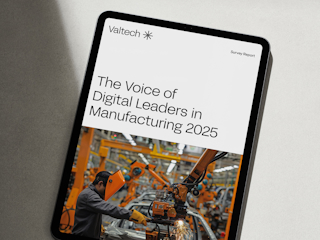四月 04, 2024
Across all industries, business leaders are grappling with economic uncertainty, cost concerns, disruption to supply chains and pressure to embrace new technologies like Generative AI. In this dynamic landscape, a high-performance and future-proof technology foundation is critical to your success.
Note: the original blog post can be found here.
We recently launched the Integrated Commerce Network. The Integrated Commerce Network is an accelerator that enables clients to modernize to a composable commerce platform and create value with their commerce data on Google Cloud with a pre-integrated solution in as little as six weeks.
We’re going to dive into the concept of composable commerce and explore how MongoDB and Google Cloud form a powerful combination that enables innovation in commerce. How can we help you navigate the complexity with our approach to digital decoupling?
Unraveling the complexity: What is composable commerce? Why microservices and APIs?
The evolution of commerce architecture
Traditional monolithic architectures, once the cornerstone of commerce platforms, are facing challenges in meeting the demands of today’s fast-paced digital environment. Microservices, a paradigm that breaks down applications into small, independent services, offer a solution to the limitations of monoliths. This architectural shift allows for improved agility, scalability and maintainability.
Defining composable commerce
Composable commerce is a component-based and API-driven solution with a design approach that gives businesses the flexibility to build and run outstanding buying experiences, free from constraints found in legacy platforms.
To be truly composable, the platform must support key tenets:
-
Ensure continuous delivery without downtime at the component level..
-
Have APIs as the contract of implementation between services with open industry standard protocols providing the glue between components, removing constraints..
-
Be SaaS-based or portable to run on any modern public cloud environment..
-
Allow the open egress and ingress of data. No black boxes of vendor data ownership..
Defining APIs and microservices
Application programming interfaces (APIs) play a pivotal role in connecting microservices, enabling seamless communication and data exchange. This modular approach empowers businesses to adapt quickly to market changes, launch new features efficiently and scale resources as needed.
Enhanced scalability, resilience and agility
Taking a microservices approach provides businesses with options. It represents a mature and battle-tested approach with commoditized architectures, infrastructure-as-code and open-source design patterns to enable robust, resilient and scalable commerce workloads at a lower cost and risk.
Additionally, the decoupled nature of microservices facilitates faster development cycles. Development teams can work on isolated components, allowing for parallel development and quicker releases. This agility is a game-changer in the competitive ecommerce landscape, where rapid innovation is essential for staying ahead.
In summary, microservices and API-based commerce solutions — such as commercetools, powered by MongoBD — have begun to dominate the market with their composable approach, and for good reason. These solutions remove the cul-de-sac of legacy commerce suite software and enable a brand to pick and choose to enhance their environment on their own terms and schedule.
MongoDB Atalas on Google Cloud: The backbone of intelligent GenAI-driven experiences
As commerce has developed, customers are expecting more from their interactions. Flat, unsophisticated experiences just don’t cut it anymore and brands need to deliver on the expectation of immediacy and contextual relevance.
A microservices approach enables richer and more granular data to be surfaced, analyzed and fed back into the loop. An example would be leveraging GenAI to synthesize information that previously would have been difficult or impossible without huge computing capabilities.
However, core data infrastructure is essential to do this well. It underpins the platform and provides the performance, resilience and advanced features required. MongoDB Atlas on Google Cloud can play a pivotal role in this enablement:
-
Flexible data models: Microservices often require diverse data models. MongoDB Atlas, a fully managed database service, accommodates these varying needs with its flexible schema design. This allows businesses to adapt their data structure without compromising performance.
-
Horizontal scalability: Modern commerce moves a lot of data. MongoDB Atlas excels in this aspect by distributing data across multiple nodes, ensuring that the database can handle increased loads effortlessly..
-
Real-time data access: Delivering on expectations relies on real-time data access. MongoDB Atlas supports real-time event-driven data updates, ensuring you are using the most up-to-date information about your customers.
-
Serverless deployment: Rather than spend time and money managing complex database infrastructure, MongoDB Atlas can leverage serverless deployment, allowing developers to focus on building features that delight customers and impact the bottom line..
A powerful combination
GenAI applications thrive on massive datasets and require robust data management. MongoDB is designed for unstructured, document-based data. It effortlessly handles the complex and ever-evolving nature of GenAI data. This includes text, code, images and more, allowing you to train your models on a richer data tapestry.
Streamlined GenAI development
MongoDB Atlas, the cloud-based deployment option for MongoDB, integrates seamlessly with Google Cloud. Atlas offers scalability and manageability, letting you focus on building groundbreaking GenAI applications.
Here’s how this powerful duo functions together:
-
Data, ingestion and storage: Effortlessly ingest your training data, regardless of format, into MongoDB Atlas on Google Cloud. This data can include text for natural language processing, code for programming tasks, or images for creative generation.
-
AI model training: Leverage Google Cloud’s AI services like Vertex AI to train your GenAI models using the data stored in MongoDB Atlas. Vertex AI provides pre-built algorithms and tools to streamline model development.
-
Operationalization and serving: Once trained, deploy your GenAI model seamlessly within your application. MongoDB Atlas ensures the smooth flow of data to and from your model, enabling real-time generation.
-
Vector Search with MongoDB Atlas Search: MongoDB Atlas Search, powered by vector search capabilities, allows for efficient retrieval of similar data points within your GenAI dataset. This is crucial for tasks like image generation or recommendation systems.
The value of an open approach
By leveraging microservice architecture, APIs, and MongoDB Atlas’ scalability and flexibility, businesses can build agile and adaptable composable platforms. As MongoDB Atlas’ seamless integration with Google Cloud provides a streamlined environment for developing and deploying GenAI models. This integrated approach offers significant benefits:
-
Simplified development: The combined power of MongoDB Atlas and Google Cloud streamlines the development process, allowing you to focus on core GenAI functionalities.
-
Scalability and flexibility: Both MongoDB Atlas and Google Cloud offer on-demand scalability, ensuring your infrastructure adapts to your GenAI application’s growing needs.
-
Faster time to market: The ease of integration and development offered by this combination helps you get your GenAI applications to market quicker.
-
Cost-effectiveness: Both MongoDB Atlas and Google Cloud offer flexible pricing models, allowing you to optimize costs based on your specific GenAI project requirements.
Digital decoupling: a legacy modernization approach
With so much digital disruption, technology leaders are constantly being challenged. Existing legacy architectures and infrastructure can be extremely rigid to change and hard to unravel. In your own research of retail organizations, over 94% of senior leaders reported experiencing tech anxiety.
So how do you manage this noise, meet the needs of the business, stay relevant and evolve your technology so that you can deliver the kinds of experiences audiences expect?
Digital decoupling is a legacy modernization technique that enables large, often well-established organizations to present unified online experience to their users. It takes full advantage of their data, innovates safely and competes effectively with digital natives.
Technology evolves rapidly and an effective microservices solution should be designed with future scalability and adaptability in mind. We will work to ensure your solution is not only robust for current requirements, but also capable of evolving with emerging technologies and business needs.
It all starts with a clear modernization strategy that allows you to iteratively untangle from legacy systems, while also meeting the needs of business stakeholders seeking innovation.
Navigating commerce complexity on Google Cloud
Commerce is undergoing a significant transformation, and businesses need a future-proof technology foundation to handle the demands of complex models and massive datasets. That's why we launched the Integrated Commerce Network, the first commerce-related solution that is part of Google’s Industry Value Network.
With the right tools and partners, your business can be at the forefront of innovation with GenAI, through automating tasks in new revolutionary ways, creating entirely new content formats and delivering more personalized customer experiences.
The complexities of commerce transformation can be daunting. Let us help you master the art of digital decoupling and leverage the strengths of the Integrated Commerce Network.
Unlock limitless possibilities and gain an edge on your competition. Check out our guide: Flipping the script — A new vision of legacy modernization enabled by digital decoupling.










